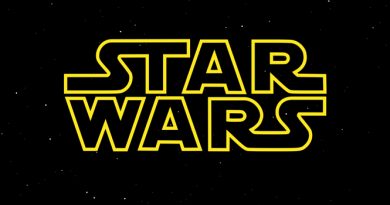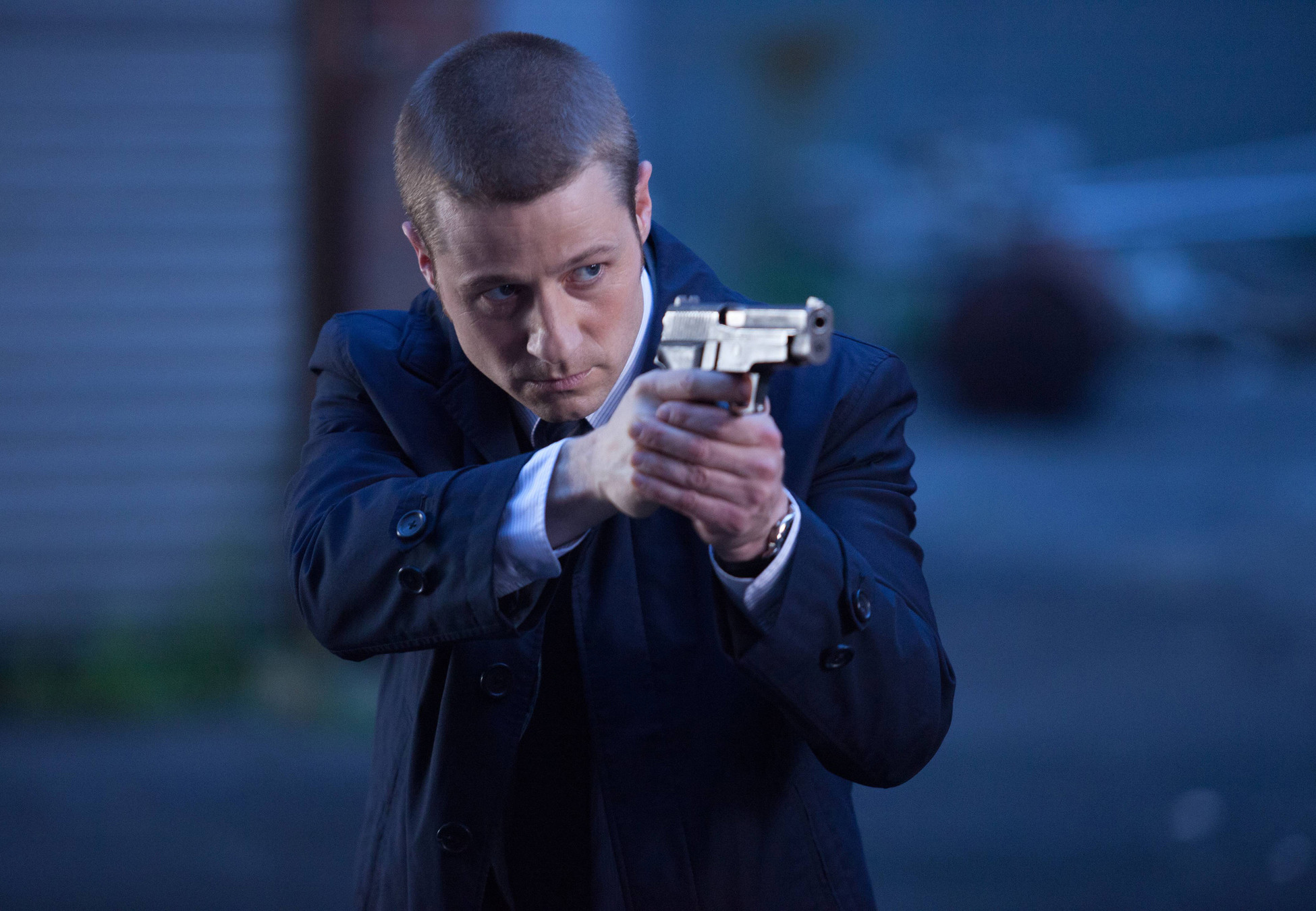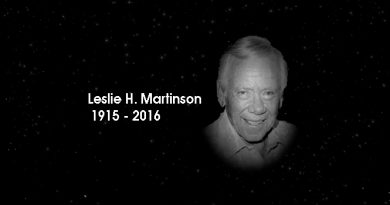Review: AFTERLIFE Isn’t a Bust

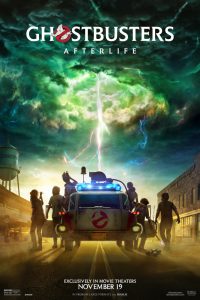
Ghostbusters: Afterlife (2021)
Directed by Jason Reitman
Written by Gil Kenan & Jason Reitman
Based on the 1984 film Ghostbusters written by Dan Akroyd and Harold Ramis
Produced by Ivan Reitman
Rated PG-13, 2h 4m
I’m all at once 51 and 14 again.
Going into this, I was concerned that this attempt would be like oh so many remakes and reboots: a pale imitative parody loaded with identity politics and one-dimensional characters. It’s not. And while it may be marinated in nostalgia, it’s a fairly well-rendered attempt to both remind people about the originals and at the same time offer up a reset button that actually works to hand off the franchise to the next generation.
A third Ghostbusters movie — the 2016 edition notwithstanding or worth mentioning past this brief acknowledgement — has been something of a mythical beast for a number of years. We’ve known that Bill Murray was a long-standing holdout, and then with Rick Moranis’ retirement and the death of Harold Ramis in 2014, the idea of another film with the original cast looked like it was gone for good.
And then…
Jason Reitman came forward with an idea to pick up the threads of the first two films and move forward with a story that bridged the gap between the original fans and current year fans. His script, co-written with Gil Kenan, expands the mythology despite dipping back into the Well of Gozer. Yes, there are story beats that are repeats from the 1984 film, but if you figure this as a trilogy, this is the Act Three Final Confrontation that gets set up in Act One. While an argument can made that it’s derivative with a repeat of several story beats in the last third of the film, it’s done in a way that builds from the first film organically, for the most part, and doesn’t feel like a simple retread.
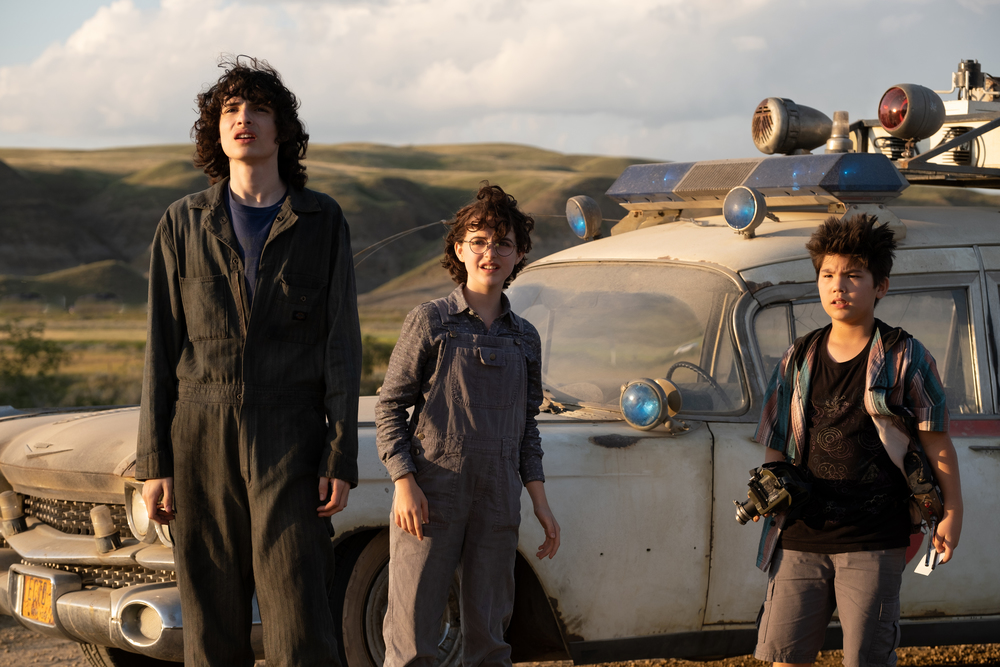
I’m going to avoid spoilers as much as I can. First, this film belongs to McKenna Grace. Her turn as Phoebe, Egon’s granddaughter, is a mix of both vulnerable awkward teenager and uber-smart child prodigy. You can definitely see the resemblance, even down to the frames of her glasses. It should also be noted that Phoebe is not a Mary Sue. She doesn’t have magic genius powers. She makes mistakes, and some of her accomplishments come about only because she has help from … well. Spoilers.
Finn Wolfhard delivers a passable big brother in Trevor. And he’s doubtless featured so much in the marketing because of his connection to Stranger Things, but he’s a supporting character in this story. I like that he’s a gearhead, although if they’ve been living in New York, I’m not sure how often he’d get his hands on anything mechanical… Having said that, he also gets his turn as a socially awkward teenager when he first meets Lucky (Celeste O’Connor) at the local diner. They hit it off after a few opening missteps, but it’s like that with teens.
Another breakout performer is Logan Kim as Podcast. And this is the character that brings the Ray Stantz energy, with his podcast about the paranormal and the occasional restaurant review (it really finds its voice at episode 46). For someone busting into film with only a couple of credits to his name, young Mr. Kim seems very comfortable in the role. He brings just the right amount of energy to the character without going over the top and turning it into a caricature of Ray.
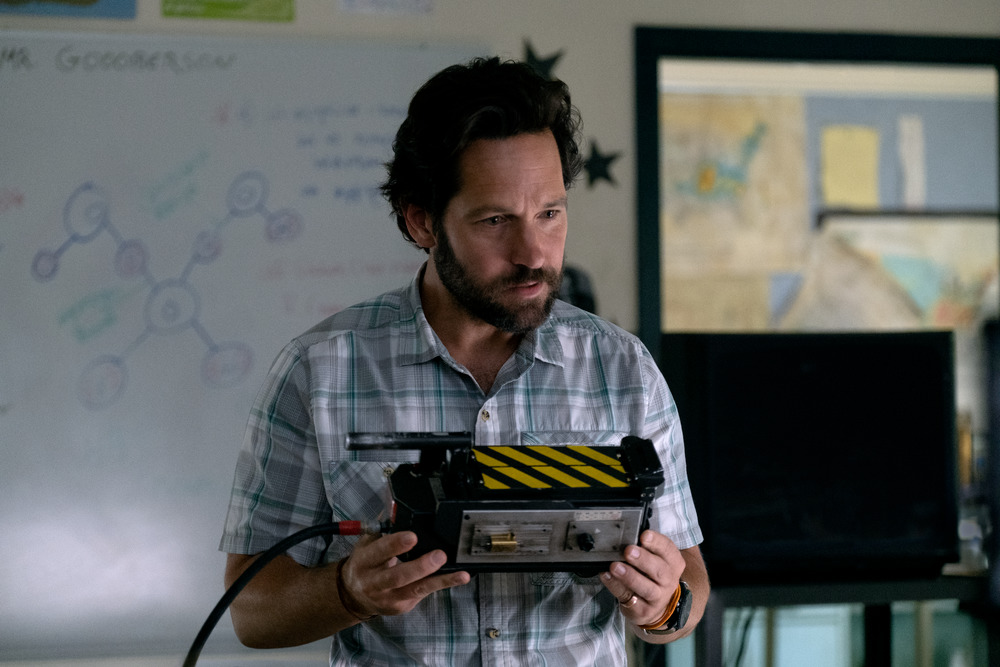
As for the adults in the room… well, Paul Rudd is Paul Rudd. Finally starting to recover from Tom Cruise Perpetual Youth Syndrome™, Rudd is his usual charming self here as Gary Grooberson, the seismologist turned summer school teacher who’s in the middle of nowhere to investigate the unusual earthquakes that have been occurring in Summerville, a place with no volcanic activity or proximity to a fault line. His connection with Phoebe (and why is she in summer school, anyway?) reminds me of certain teachers I had growing up. There’s always one (or two) that really connect with you, that really “get it” when it comes to understanding the kids who don’t quite fit in. Grooberson was probably that kid in school, and he was likely the class clown to compensate for it.
My biggest quibble is with Carrie Coon’s portrayal of Callie, Trevor and Phoebe’s mother. If there’s any weakness in this film, it’s this character. Callie is one-dimensional, and she’s only got one mode until the third act. She’s broke, depressed, the world is working against her, and she’s pretty much given up on everything, including her kids. There’s no real nuance to this character. She’s bitter about being abandoned by her father — and there’s absolutely no mention of her mother — and she doesn’t make any effort to hide this from her kids. It’s irresponsible parenting, for one, and it doesn’t make her character sympathetic enough for me to care a lot about the resolution of this story thread.
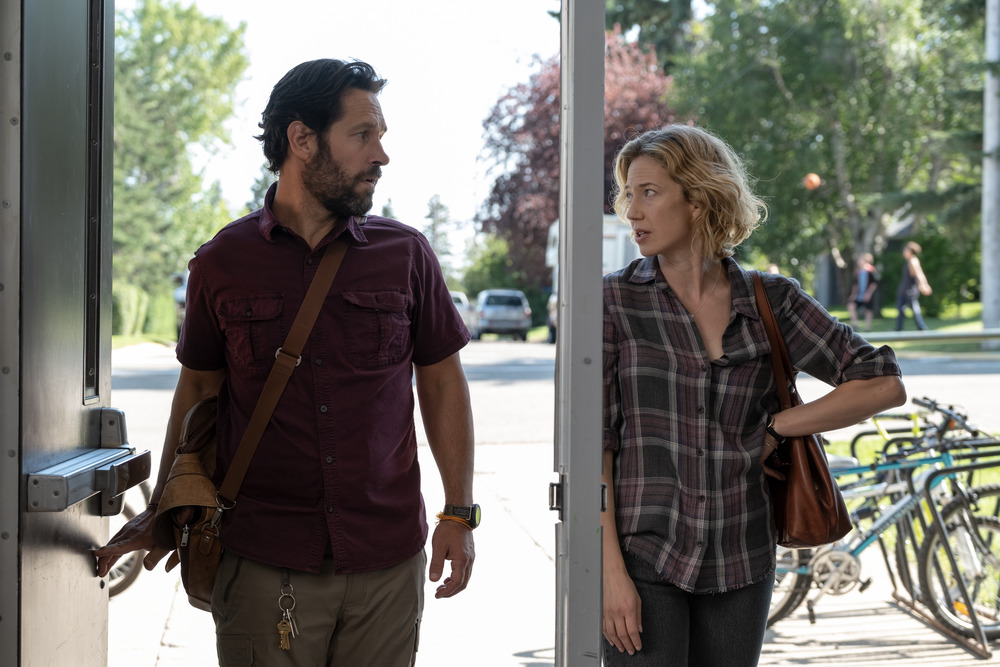
In fact, I don’t even really feel like Callie has any kind of significant relationship with her kids at all. “Don’t be yourself” feels like it’s a running gag between Callie and Phoebe, but it falls flat because I’m not emotionally invested in Callie. Even when she has her (predictable) a-ha moment, I don’t buy it completely. Callie feels like a cynical satire of all the single mothers populating the Disney channel in the 90’s and early aughts.
As far as the story goes, a lot of people are going into this expecting a comedy. It’s not really that. Nor is it a fan-service nostalgia trip. Just as the original Ghostbusters was a mix of genres, so too is Ghostbusters: Afterlife. It’s at times creepy, funny, and poignant. Those of us who were around for the first one will have a few moments of blurry vision towards the end. Reitman has peppered the film with visual and audible callbacks to the 1984 movie, but they’re organic to the story — the symmetrical stacking of books to indicate the presence of a spirit, even though no one will recognize it (except for us fans pointing at the screen saying “I understand that reference” or something). The “Who’re you gonna call?” line is in a scene where it actually fits and doesn’t feel shoehorned in.
The appearance of the original team, while brief, has a very emotional payoff that satisfies not only the needs of the story as a third act in a trilogy, but also gives some closure for fans of Egon Spengler and Harold Ramis. Both are treated with respect in this picture, and if you can’t have Harold actually there, they’ve managed the next best thing with the help of actor Bob Gunton (the warden from The Shawshank Redemption, among other projects) and some carefully crafted camera and CGI work. We also get the setup for additional films with the post-credits scene.
All in all, while it might not be 100% perfect in every way, it’s a satisfying conclusion to the trilogy, and it effectively hands the baton to a new set of Ghostbusters. Not just the kids, but the door is open to build on one of the early ideas of Ghostbusters franchises across the country. Who knows? Maybe somewhere in this universe, Dr. Erin Gilbert is waiting to answer the call…
![]()


